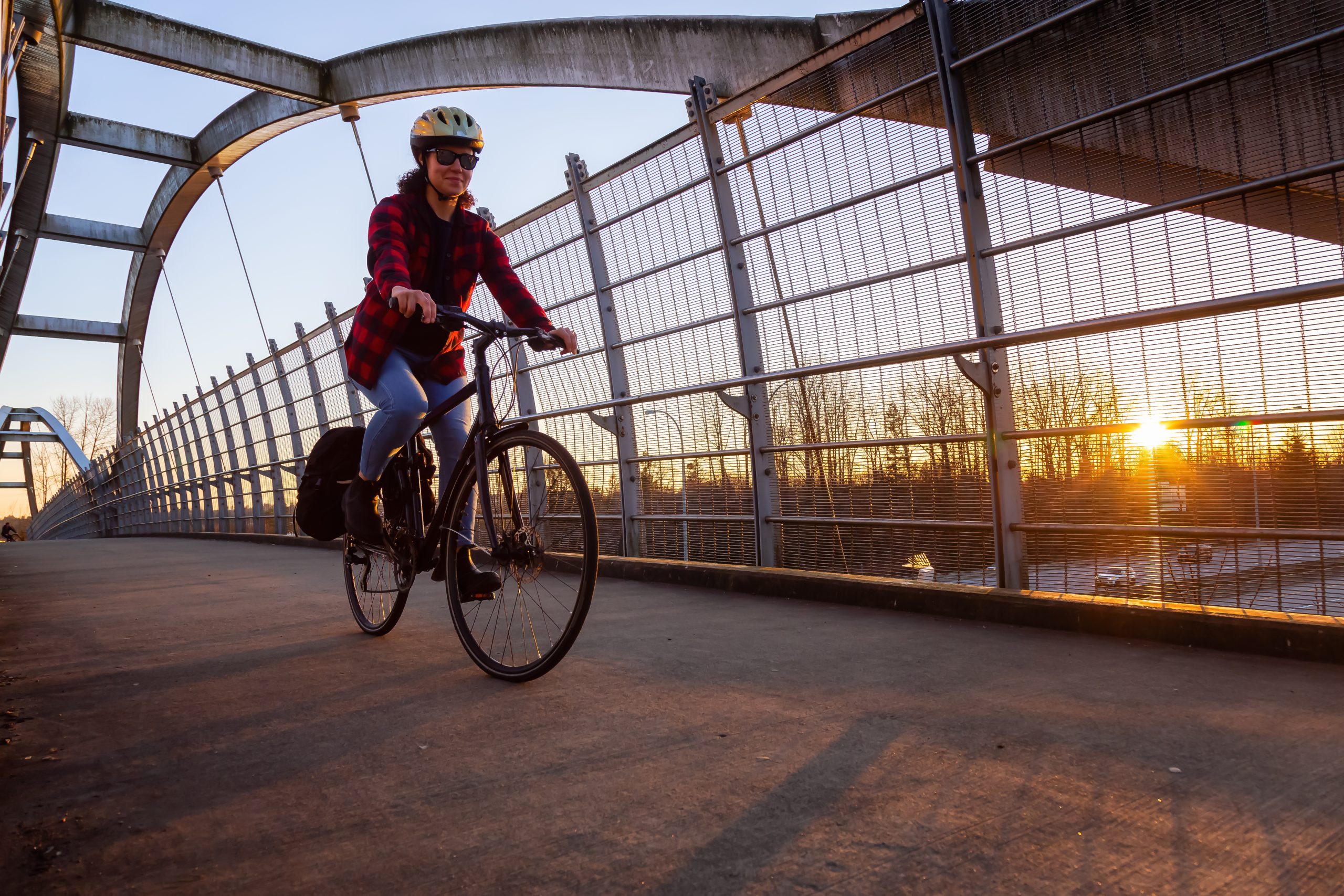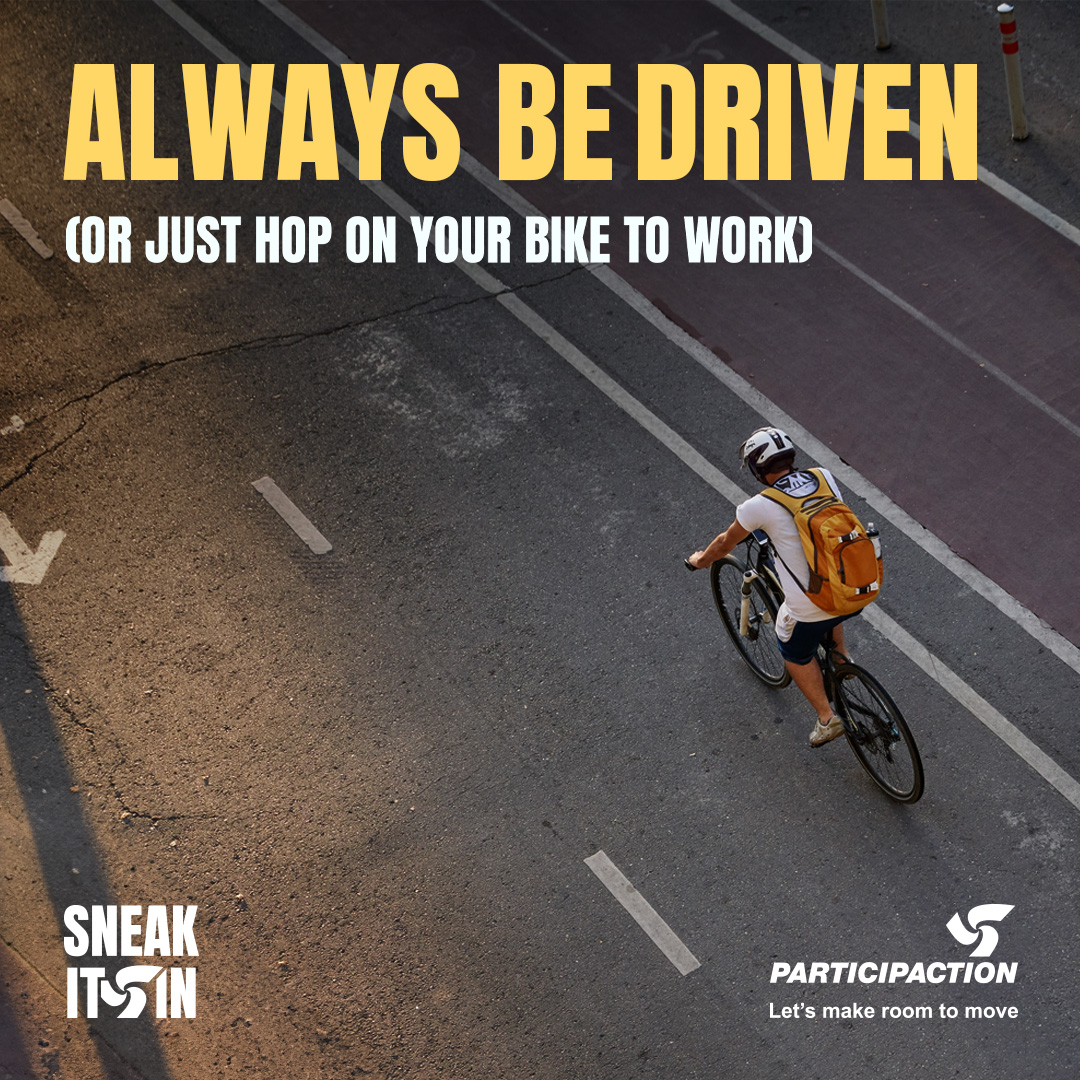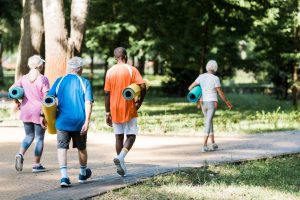Did you know that less than half (46%) of adults are meeting national physical activity guidelines of 150 minutes of moderate-to-vigorous physical activity per week? Or that excluding sleep time, adults are sedentary for 9.3 hours a day on average?
Desk- and home-bound jobs, personal vehicle transportation and the conveniences that the internet and delivery services provide are all keeping movement at the bottom of our ever-growing lists of priorities, whether it’s work tasks, family obligations, household chores and errands. In fact, only 63% of people in Canada agree that physical activity is a daily priority.
Just like many of our priority lists, the list of barriers to physical activity for people in Canada continues to grow and evolve and includes combinations of the following:
- Intrapersonal barriers such as lack of cognition beliefs, planning, motivation and energy, time constraints, and fear of injury
- Interpersonal barriers like low peer support and harassment from bullies
- Policy barriers such as early school and work start times
- Community barriers, such as travel distance, weather conditions, land-use planning and infrastructure
- Accessibility barriers like cost and transportation
- Operational barriers such as lack of specialized facilities, equipment and staffing
- Environmental barriers like extreme weather events

While everyone’s life situation is different, making room in your busy schedule for short movement breaks will help you be your best self by improving your mood, energy, creativity, focus, productivity and more. You don’t have to lift weights at a gym, take high-intensity exercise classes or run a marathon – any physical activity you love doing or suits your needs or circumstances counts. Physical activity is not one-size-fits-all, and you can Sneak It In whenever, wherever and however works best for you!
8 tips for sneaking physical activity in throughout your day
1. Aim to move for just a few minutes every hour
If you typically spend most of your day sedentary (for example, you work or volunteer in an office setting or at home, or you’re a student), try to get moving for just five minutes each hour to reap some benefits of physical activity. For example, you could do a five-minute, equipment-free workout that includes one minute each of jumping jacks, squat jumps, high knees, push-ups and burpees.

All these mini movement breaks will not only boost your mood and energy but also your odds of winning prizes in the Sneak It In challenge. Think about it: assuming you’re awake for 16 hours a day, if you moved for just five minutes each hour, that would add up to 80 minutes of physical activity!
2. Take stretch breaks, pick up the pace or take the longer route
If you already spend most of your days moving or standing (for instance, you work or volunteer in healthcare, retail, skilled trades, manufacturing, hospitality or education), take short stretch breaks every hour, move more quickly or take the longer way to the washroom, kitchen or breakroom.
3. Make your everyday actions active actions
Find opportunities to get active while working, studying, volunteering, engaging in self-care activities, doing chores and errands, and/or waiting. Take meetings and calls on the move, do a few squats while brushing your teeth, take a short dance break while unloading the dishwasher, stretch on the spot while waiting in line or for the elevator, and/or lunge to and from your vehicle.

4. Set movement break reminders
Set reminders on your phone, computer, smartwatch or tablet. Treat your active breaks like meetings, appointments and other obligations by planning them and blocking the time in your calendar so you’ll be more likely to stick with them.
5. Use active transportation to get around
If possible, walk, wheel, cycle, rollerblade, skateboard or ride a scooter to and from work, school, appointments, and/or shops, even if it’s just for part of the way. Taking public transit? Get off a stop or two earlier or take the stairs instead of escalators or elevators at stations if you’re able. In fact, just walking to and from public transit can help you get eight to 33 more minutes of physical activity each day.

6. Keep exercise equipment handy
Make small fitness equipment like resistance bands, dumbbells or a jump rope accessible for quick workouts. Or simply store a pair of running shoes under your desk or in your personal vehicle.
7. Have active playtime
Play interactive games with your family that require physical movement. Playing tag, hopscotch or jumping rope with your kids, or playing fetch with your pet could be active for all of you!
8. Exercise to energize
View physical activity less as a chore and more as a way to boost your energy. Sometimes we don’t move because we’re tired, but research shows that getting active can be just what we need!









